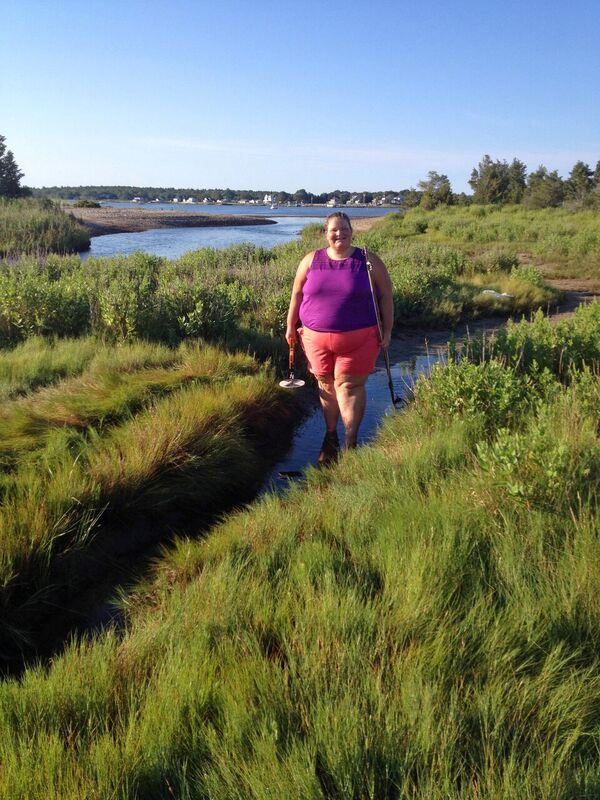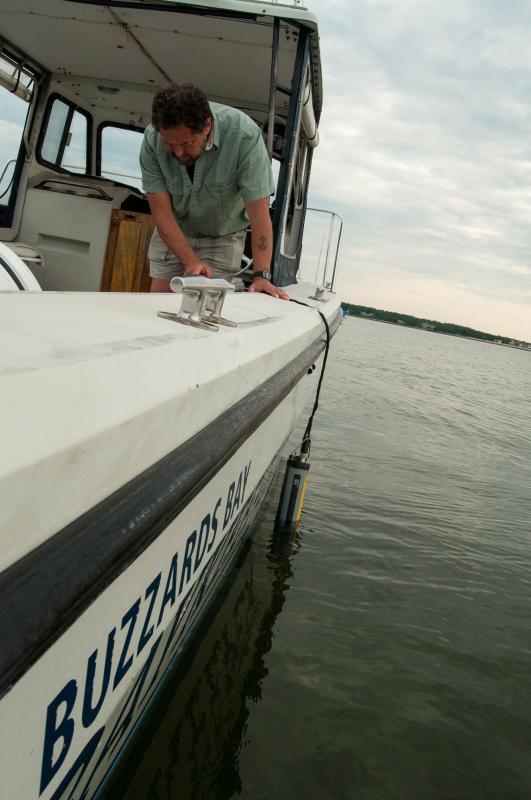Study shows climate change poses threat to Buzzards Bay
Rising sea temperatures are already impacting the plants and animals living in area waters, according to a new study released by the Woods Hole Oceanographic Institution.
The authors of the study, published January in the journal “Biogeosciences,” found that average summer temperatures throughout Buzzards Bay have increased by 4 degrees Fahrenheit over the past two decades.
“That is a rapid temperature increase for marine life,” said Jennie Rheuban, a researcher at Woods Hole and the study's lead author. “For some species, a single degree Fahrenheit change can mean the difference between a comfortable environment and one where they can no longer thrive.”
Citizen scientists and researchers from Woods Hole collected data from the waters at Aucoot Cove, Sippican Harbor, Hillers Cove and other waterways over a 22-year period to develop the report.
The study also found that algae levels were increasing, despite nitrogen levels remaining relatively stable.
That fact surprised researchers who say high nitrogen levels are a major factor in contributing to a waterway’s poor health.
Buzzards Bay Coalition Science Director Rachel Jakuba said that information changes how the organization will approach water quality efforts. Founded in 1987, the nonprofit organization is dedicated to the restoration, protection and sustainable use of Buzzards Bay and its watershed.
“With more nitrogen there’s declining levels of oxygen that can cause things like fish kills,” Jakuba said. “The implications of this study means it’s more difficult to improve water quality. We may have to reduce nitrogen more than we thought based on historic trends.”
That adds a challenge for researchers looking to improve water quality in watersheds with an excess of nitrogen, she said.
It appears the warmer waters are fueling algae growth without a spike in nitrogen, which is released from septic systems, wastewater treatment plants and fertilizer runoff. More algae clouds water quality, making it difficult for species such as eel grass to grow. As a foundation species, eel grass provides an important habitat for wildlife.
“We think of nitrogen as the main factor in controlling how much algae grows, but in Sippican Harbor the nitrogen concentration has been constant and the amount of algae there is much higher than it was ten years ago,” Jakuba said.
The information is important, Jakuba said, because it helps identify how ecosystems respond to climate change, giving researchers ideas for future clean up efforts.
“Having water quality information is critical to prompting any action when it comes to cleaning the bay,” Jakuba said.
Last year marked the first time the data collected through the coalition’s Baywatchers program was analyzed for long term changes in water quality.
Starting in the summer of 1992, volunteers have taken samples from local beaches, marshes and rivers to monitor the bay’s health.
After receiving training from coalition officials, volunteers gather water samples and test temperature, salinity, water clarity and dissolved oxygen from May through September.
In late summer, collected water samples are delivered to Woods Hole where they are analyzed for nitrogen, phosphorus and chlorophyll levels.
Jakuba said the coalition’s Baywatchers program has provided critical information to help the group’s advocacy efforts.
“The aim of the research is to track how water quality is improving or declining and target clean up efforts,” she said. “That’s why we started collecting data and why we’ll continue to collect.”
For more information on the study, click here.

















